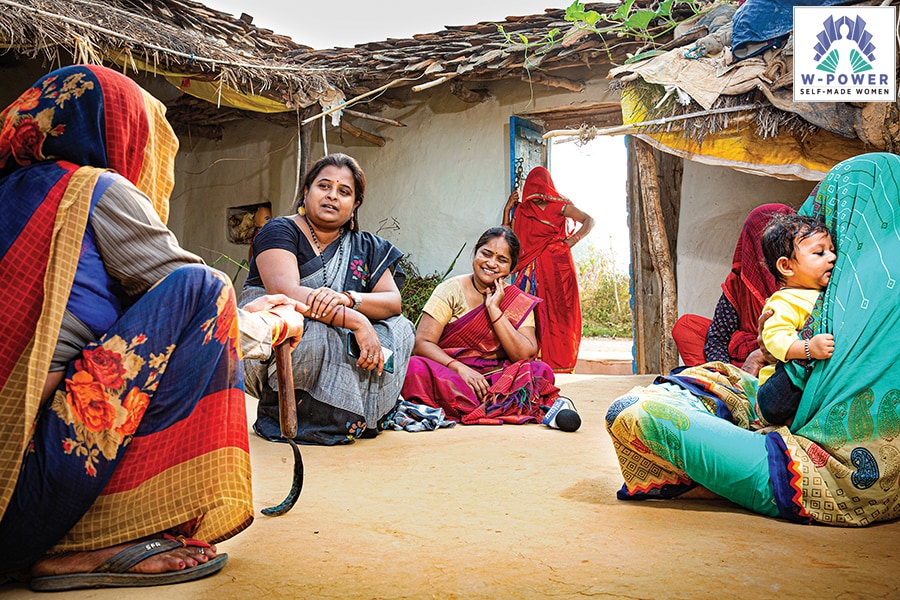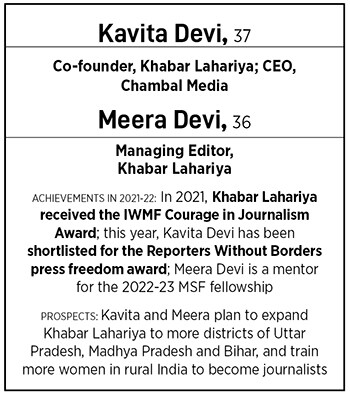
Kavita Devi and Meera Devi: Giving voice to marginalised with Khabar Lahariya
Through media network Khabar Lahariya, Kavita Devi and Meera Devi are ensuring elected heads are held accountable by reporting on issues of women and marginalised communities from the hinterland
 (left)Kavita Devi, Co-founder, Khabar Lahariya and CEO, Chambal Media; Meera Devi, Managing Editor,
Khabar Lahariya Image: Madhu Kapparath
(left)Kavita Devi, Co-founder, Khabar Lahariya and CEO, Chambal Media; Meera Devi, Managing Editor,
Khabar Lahariya Image: Madhu Kapparath
Kavita Devi is on a mission: To dispel the notion that women are timid and emotional, and that they cannot become journalists as it is a challenging field. “Mahilayein komal hoti hain, turant roney lagti hain, yeh jo Laxman rekha khinchi hui hai mahilaon ke liye, hamey usey laanghna hai [we need to traverse the lines drawn for women on the assumption that they are weak and cry at the drop of a hat],” says Kavita, co-founder and editor-in-chief of Khabar Lahariya, the only women-led digital rural media network in the country.
The first Dalit to become a member of the Editor’s Guild of India, she is also the CEO of Chambal Media. Kavita also trains young women in rural India for a career in the media. “We have designed a course on mobile journalism, and want women from rural areas to become journalists, producers and filmmakers. We want to empower them to make their dreams come true,” she says, adding that they have trained approximately 270 women so far.
Born to a family of farmers in Kunjan Purwa village near Banda in Uttar Pradesh, Kavita was married at the age of 12. Despite resistance from her family and villagers, she enrolled in an adult education programme. At the end of the course, they published a two-page black-and-white broadsheet called Mahila Dakia that had articles written by women in the local Bundeli language.
 Soon after, Devi, along with Meera Jatav and Shalini Joshi, who had worked together on Mahila Dakia, founded the Khabar Lahariya newspaper.
Soon after, Devi, along with Meera Jatav and Shalini Joshi, who had worked together on Mahila Dakia, founded the Khabar Lahariya newspaper.
As its popularity grew, the number of pages increased from two to four to eight, and they started printing in colour. And as its reach spread to other districts, it was printed in other languages. As part of an organisational restructuring, today Khabar Lahariya is one of the verticals of Chambal Media along with Chambal Academy. Chambal Media, a digital media social enterprise, was founded in 2015 by a team of rural and urban media practitioners, making content that mainly focuses on rural women and rural landscapes.
(This story appears in the 30 November, -0001 issue of Forbes India. To visit our Archives, click here.)







